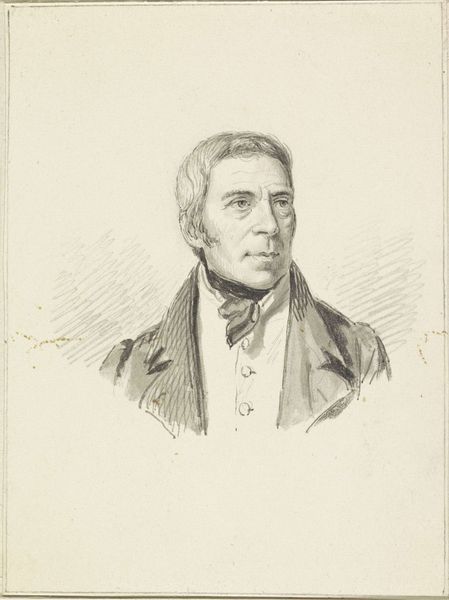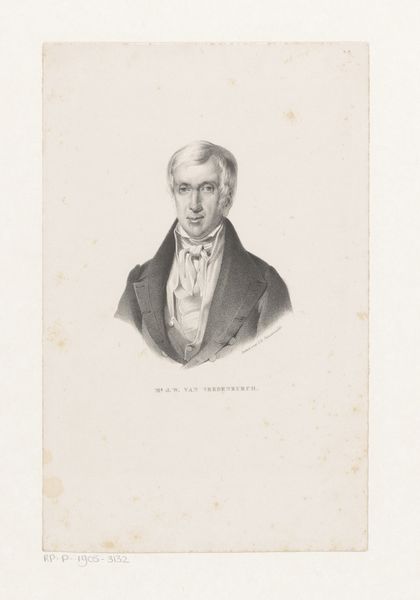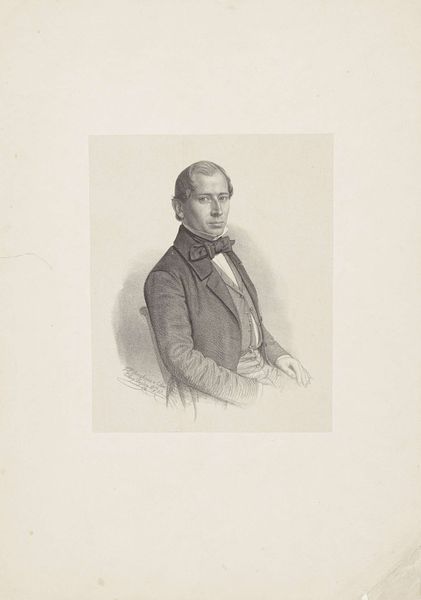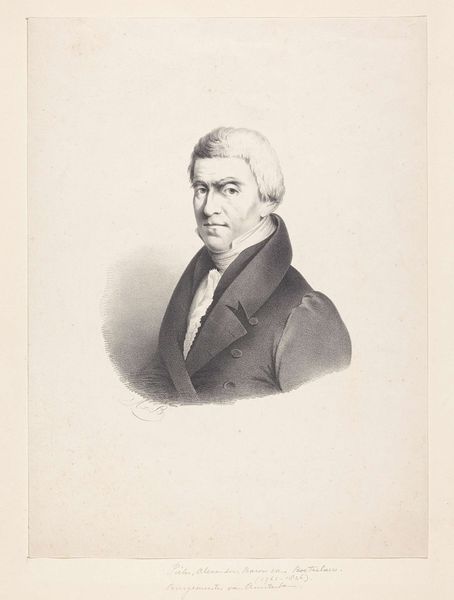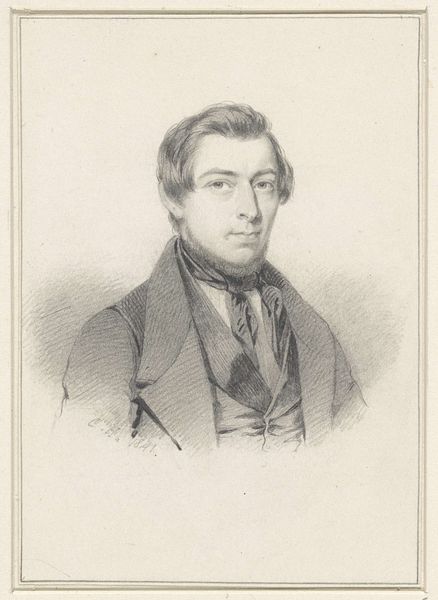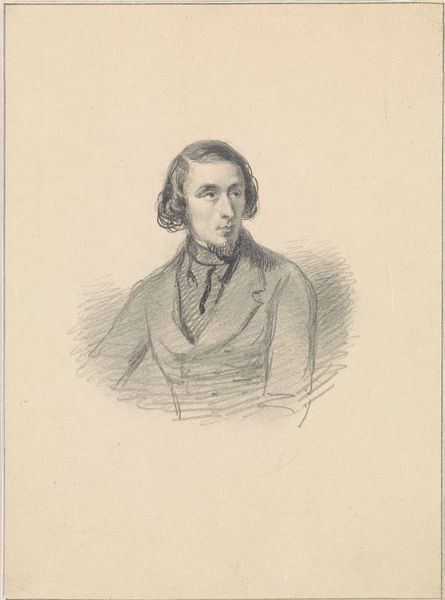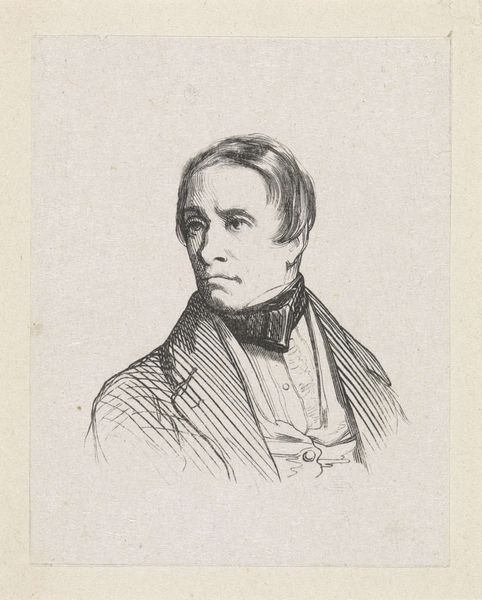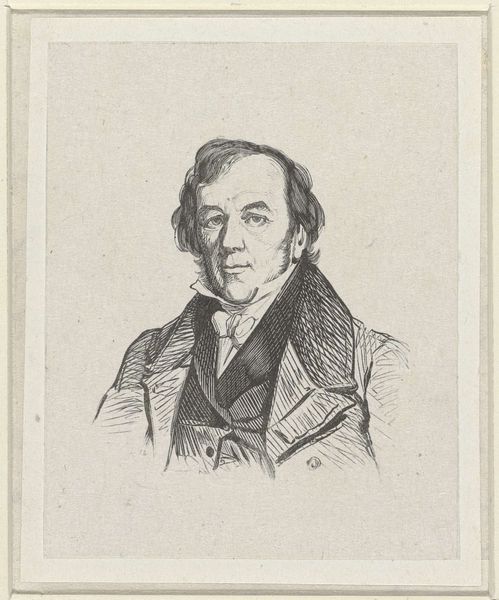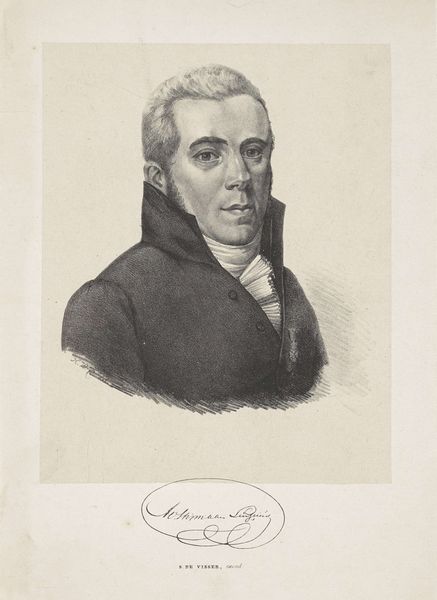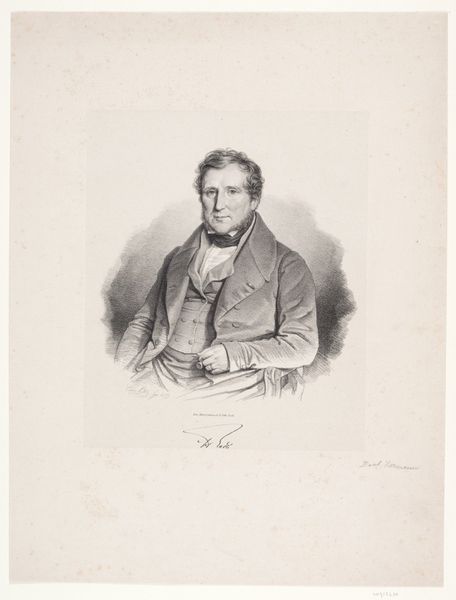
engraving
#
portrait
#
old engraving style
#
portrait drawing
#
history-painting
#
engraving
Dimensions: height 79 mm, width 64 mm
Copyright: Rijks Museum: Open Domain
Curator: I find something immediately striking about this piece—perhaps it's the stern gaze or the formality of dress, but there's an undeniable sense of authority emanating from this portrait. Editor: Yes, this is "Portret van Leendert de Koningh", an engraving made sometime between 1832 and 1900 by Adolphe Frédéric Nett, currently residing here at the Rijksmuseum. Consider how the meticulous hatching builds both form and an austere atmosphere. Curator: Austere is exactly the word! It’s like a visual embodiment of 19th-century patriarchal power structures. The sharp lines, the rigid posture… it speaks volumes about the sitter’s position within a highly stratified society. I can imagine the social expectations weighing heavily on him. Editor: Indeed, the engraving's presence within the Rijksmuseum collection adds another layer. It solidifies the historical narrative surrounding individuals who held positions of influence, reflecting and reinforcing a certain vision of Dutch identity through its selection and display practices. How do we, as an institution, grapple with these potentially exclusionary legacies today? Curator: That's precisely what makes art history so compelling; it's a conversation, not a lecture. Here we see this very specific portrayal, Leendert de Koningh, whoever he might have been, becomes a stand-in for all the structures, limitations, and assumptions of his time. We must remember those left outside the frame as well. Editor: And let's also remember that this is an engraving—a readily reproducible medium, compared to, say, a unique painted portrait. Engravings like these served to disseminate power, spreading these carefully crafted images of authority far and wide within society. This adds a socio-political dimension, certainly. Curator: Absolutely. We have to acknowledge that art doesn't exist in a vacuum, especially portraiture. Considering the period of creation for this print, what ideologies might have influenced both the artist and subject? What roles do class and gender play here? Editor: So, beyond its aesthetic qualities, it’s an artifact of power and dissemination of image within a complex, specific, historical and cultural matrix. Looking at this engraving then urges us to ask crucial questions about representation, historical narratives, and our institutional responsibilities. Curator: Agreed. It's more than just a face; it’s a reflection—a stark reminder of the intricate interplay between art, society, and the narratives we choose to perpetuate.
Comments
No comments
Be the first to comment and join the conversation on the ultimate creative platform.
